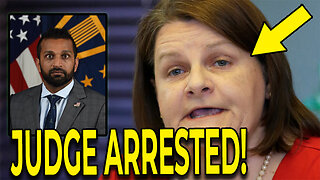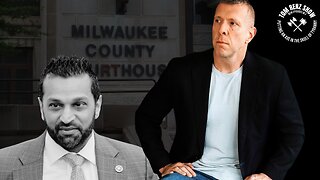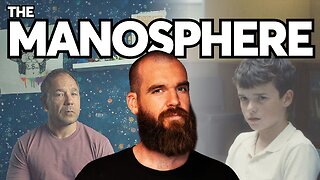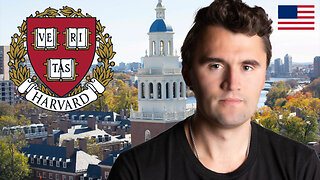Premium Only Content

Strange Music Neo Art - Red Shaman Memoria
Experimental music is a general label for any music or music genre that pushes existing boundaries and genre definitions.[1] Experimental compositional practice is defined broadly by exploratory sensibilities radically opposed to, and questioning of, institutionalized compositional, performing, and aesthetic conventions in music.[2] Elements of experimental music include indeterminacy, in which the composer introduces the elements of chance or unpredictability with regard to either the composition or its performance. Artists may approach a hybrid of disparate styles or incorporate unorthodox and unique elements.[1]
The practice became prominent in the mid-20th century, particularly in Europe and North America. John Cage was one of the earliest composers to use the term and one of experimental music's primary innovators, utilizing indeterminacy techniques and seeking unknown outcomes. In France, as early as 1953, Pierre Schaeffer had begun using the term musique expérimentale to describe compositional activities that incorporated tape music, musique concrète, and elektronische Musik. In America, a quite distinct sense of the term was used in the late 1950s to describe computer-controlled composition associated with composers such as Lejaren Hiller. Harry Partch and Ivor Darreg worked with other tuning scales based on the physical laws for harmonic music. For this music they both developed a group of experimental musical instruments. Musique concrète is a form of electroacoustic music that utilises acousmatic sound as a compositional resource. Free improvisation or free music is improvised music without any rules beyond the taste or inclination of the musician(s) involved; in many cases, the musicians make an active effort to avoid clichés; i.e., overt references to recognizable musical conventions or genres.
Special Thanks
Arnold Schwarzenegger & Sylvester Stallone & Nicolas Cage & Mif
& Britney Spears & Rita Ora & Donald Trump & Jeremy Shada
& Carlos Alazraqui & The Weeknd & Magdalena Abakanowicz & Sean Astin
& Porfiry Iwanow & Jack Palance & Bjork & Sam Harris
& Jessica Alba & Amy Adams & Ben Affleck & Wes Anderson
Another Special Thanks:
Bette Davis & Ted Danson & Geena Davis & Benicio Del Toro & Patrick Dempsey & Gerard Depardieu
& Danny DeVito & Cameron Diaz & Vin Diesel & Matt Dillon & Vincent D'Onofrio & Kirk Douglas
& Richard Dreyfuss & Adam Driver & Faye Dunaway & Kirsten Dunst & Barbara Eden & Colin Farrell
& Fabio & Will Ferrell & Veronica Ferres & Ralph Fiennes & Laurence Fishburne & Louise Fletcher
& Jane Fonda & Henry Fonda & Glenn Ford & Peter Fonda & Ben Foster & Harrison Ford & Jamie Foxx
& James Franco & Michael J. Fox & Clark Gable & Janusz Gajos & Janeane Garofalo & Vincent Gallo & Kylee Nash & Sean Bean & Shyla Stylez & Nikki Fritz & Paul Giamatti & Martin Scorsese & Henry Winkler & Rita Ora
& Richard Gere & John Goodman & Andrzej Grabowski & Frank Grillo & Jake Gyllenhaal & Mark Hamill
& Thomas Haden Church & Tom Hardy & Richard Harris & Josh Hartnett & Rutger Hauer & Amber Heard
& Salma Hayek & Val Kilmer & Chris Hemsworth & Audrey Hepburn & Katharine Hepburn & Tom Holland
& Alfred Hitchcock & Havoc & Dennis Hopper & Bob Hoskins & Helen Hunt & Holly Hunter & John Hurt
& William Hurt & Michael Ironside & Hugh Jackman & Glenda Jackson & Kevin James & Thomas Jane
& Scarlett Johansson & Dwayne Johnson & James Earl Jones & Michael B. Jordan & Milla Jovovich
& Diane Keaton & Harvey Keitel & Riley Keough & Nicole Kidman & Danny Glover
Special Thanks To Directors, Producers & Writers Of Movies:
The Godfather & The Shawshank Redemption & Forrest Gump & Pulp Fiction & Toy Story & Gone With The Wind & The Matrix & Ponyo & Duplex & The Silence Of The Lambs & Reservoir Dogs & Cat's Eye & Of Mice And Men & The Dark Knight & Batman & Superman & Apocalypse Now & Titanic & Origin & A Not So Royal Christmas & The Good Ship Murder & Christmas With A Kiss & Femme & Welcome to Samdal-ri & Waitress: The Musical & Trolltider - legenden om Bergatrollet & Christmas on Cherry Lane & Christmas on Windmill Way & Magic in Mistletoe & Les trois mousquetaires: Milady & Shehar Lakhot & Finestkind & Kusuriya no hitorigoto & Znam kako dises & Frybread Face and Me & Trolltider & The Jingle Bell Jubilee & Christmas at the Chalet & Dodger
Special Thanks To Authors Of:
888Hz Abundance Gate, Remove All Negative Blockages, 888 Hz Infinite Abundance, Love & Wealth
MAYOR SLOGO Put Me To WORK... (Minecraft Squid Island)
The incorporation of music into general education from preschool to post secondary education, is common in North America and Europe. Involvement in playing and singing music is thought to teach basic skills such as concentration, counting, listening, and cooperation while also promoting understanding of language, improving the ability to recall information, and creating an environment more conducive to learning in other areas.[150] In elementary schools, children often learn to play instruments such as the recorder, sing in small choirs, and learn about the history of Western art music and traditional music. Some elementary school children also learn about popular music styles. In religious schools, children sing hymns and other religious music. In secondary schools (and less commonly in elementary schools), students may have the opportunity to perform in some types of musical ensembles, such as choirs (a group of singers), marching bands, concert bands, jazz bands, or orchestras. In some school systems, music lessons on how to play instruments may be provided. Some students also take private music lessons after school with a singing teacher or instrument teacher. Amateur musicians typically learn basic musical rudiments (e.g., learning about musical notation for musical scales and rhythms) and beginner- to intermediate-level singing or instrument-playing techniques.
At the university level, students in most arts and humanities programs can receive credit for taking a few music courses, which typically take the form of an overview course on the history of music, or a music appreciation course that focuses on listening to music and learning about different musical styles. In addition, most North American and European universities have some types of musical ensembles that students in arts and humanities are able to participate in, such as choirs, marching bands, concert bands, or orchestras. The study of Western art music is increasingly common outside of North America and Europe, such as the Indonesian Institute of the Arts in Yogyakarta, Indonesia, or the classical music programs that are available in Asian countries such as South Korea, Japan, and China. At the same time, Western universities and colleges are widening their curriculum to include music of non-Western cultures, such as the music of Africa or Bali (e.g. Gamelan music).
-
 13:18
13:18
T-SPLY
3 hours agoFBI Arrest Democrat Judge For Protecting Illegal Immigrant!
1071 -
 2:06:25
2:06:25
Tim Pool
2 hours agoFertility Decline & DESTRUCTION of the American Family | The Culture War with Tim Pool
82.7K95 -

Stephen Gardner
1 hour agoTrump's MOVE Ignites DEM Civil War - Top Leader on CHOPPING BLOCK!
8214 -
 DVR
DVR
The Tom Renz Show
1 hour agoObstructionist Judge Arrested & Is India the New China for Trade?
1691 -
 30:33
30:33
IsaacButterfield
9 hours ago $0.07 earnedWhy Is Everyone Talking About Netflix's "Adolescence"?
9736 -
 1:56:06
1:56:06
Steven Crowder
4 hours agoNY Times Goes Full Simp for Deported Jamaican Kidnapper
246K113 -
 LIVE
LIVE
Scammer Payback
1 hour agoCalling Scammers Live
279 watching -
 1:06:21
1:06:21
The Big Mig™
2 hours agoGlobal Finance Forum From Bullion To Borders We Cover It All
9.75K10 -
 51:22
51:22
Steve-O's Wild Ride! Podcast
1 day ago $0.95 earnedAre The Trailer Park Boys Smarter Than They Seem? | Wild Ride 258
16K7 -
 1:58:10
1:58:10
The Charlie Kirk Show
2 hours agoArrested Judge + War On Harvard + AMA | Sen. Mullin, Rufo | 4.25.25
43.3K5